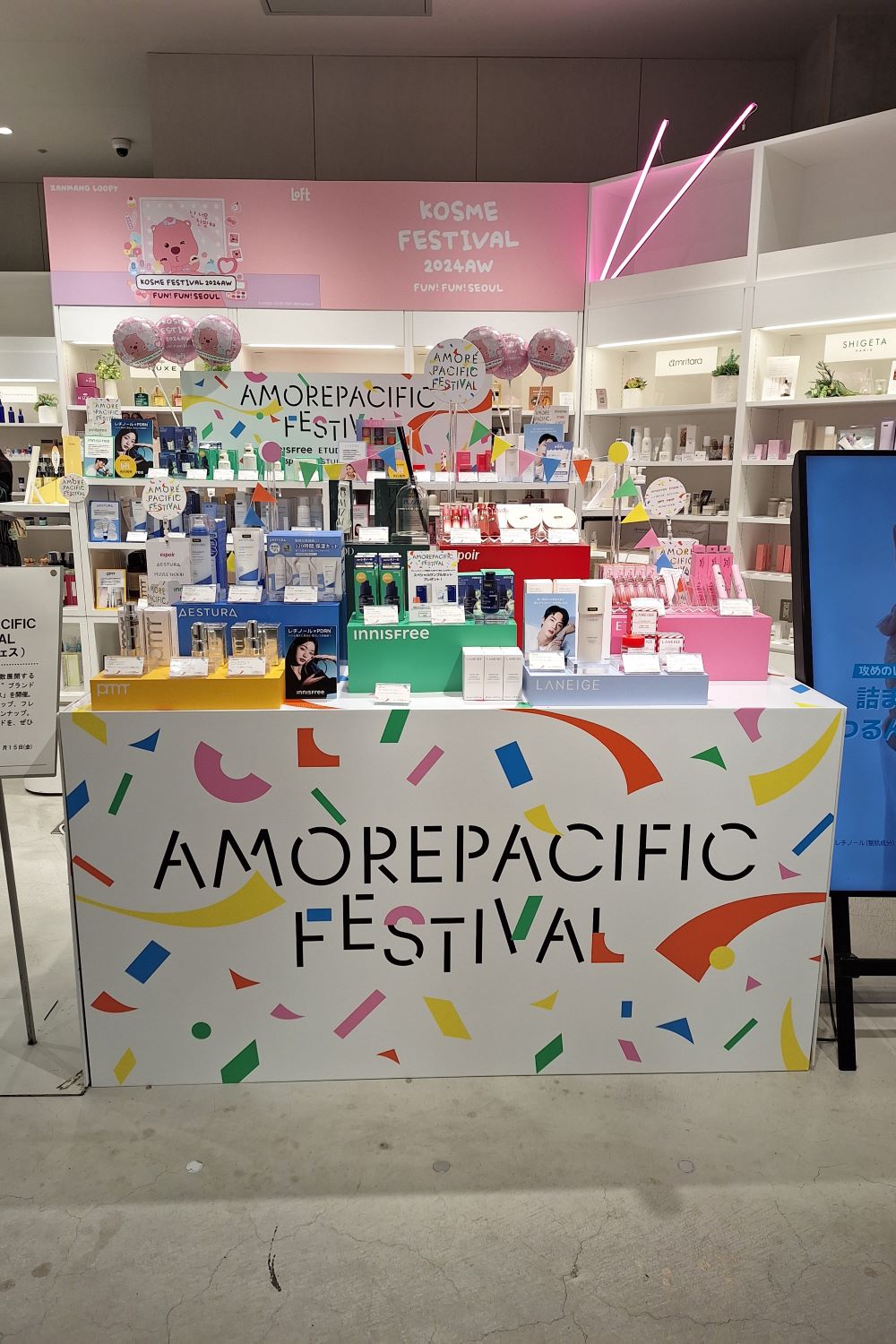Five beauty trends from Tokyo
Five beauty trends from Tokyo
Tokyo is one of my favourite big cities. In October, I was finally able to visit the metropolis again to go on a beauty trend research. There was a drugstore right opposite my hotel that I visited quite often - it was still open in the evening after dinner, how convenient! But I was also able to successfully search for trends and explore the Japanese cosmetics market in the newly built shopping malls in Shibuya and Roppongi. You can read about all the new things to discover in Tokyo in my blog post here.

Organic cosmetics at Cosme Kitchen
The best place to buy natural and organic cosmetics in Japan is the Cosme Kitchen retail chain. It was founded in 2004 and has over 70 branches in Japan. There is a large selection of (mostly certified) organic and natural cosmetics for facial and body care, hair care and styling as well as baby care. In addition to Japanese brands, you can also find Western brands such as Weleda and Martina Gebhardt. I find the own brands F Organics, Celvoke and Snidel particularly interesting. What did I buy from Cosme Kitchen? The Deep Moisture Milk from F Organics, the facial emulsion is a bestseller at Cosme Kitchen. Of course there is also a Cosme Kitchen online shop.

Cosmetics from Korea and China
The beauty departments of the Japanese department stores Loft or Hands and the stylish drugstore Ainz&Tulpe are known for their trendy niche brands, which attract young people in particular. During my store checks in Tokyo, I noticed that many of the new skincare and colour cosmetics brands listed in these shops come from Korea. The Korean Amore Pacific Group even had a large special area at Loft to showcase several of its brands. Alongside China and the USA, Japan is the most important export country for K-Beauty. Korean natural brands such as Femmue and VT Naturals are available at Cosme Kitchen.
I also found it thrilling that C-Beauty (cosmetics from China) is now also establishing itself on the Japanese market. The pioneers here are decorative cosmetics brands for young women in the lower mid-price segment, e.g. Judydoll or Perfect Diary.

Active ingredients: Exosomes and EGF
I came across two active ingredients particularly often during my trend research in Japan. They were popularised through treatments in beauty clinics and cosmetic studios: exosomes and EGF. They are now also frequently found in cosmetic products for use at home.
Sheet masks with exosomes are particularly popular in Japan. Exosomes are small vesicles that are produced by different cell types and contain transmitters for intercellular communication. They influence ageing processes, inflammatory reactions, the immune system and skin regeneration.
I have often discovered EGF in Japanese serums. The abbreviation stands for ‘Epidermal Growth Factor’. These special proteins boost the skin's own cell renewal and regeneration process.

A successful online-offline connection
The cosme.net website was launched in Japan in 1999 and quickly became popular throughout Asia and beyond. Anyone who wanted to learn more about Japanese cosmetics could find countless reviews on the website, written by a large beauty community. The prestigious and influential Cosme Awards are still presented twice a year. An extensive range of Japanese, Asian and Western mass and premium brands can be purchased directly from the associated online shop.
About ten years ago, the first stationary @cosme shop was opened in Tokyo. On my trend hunt in Tokyo, I visited the flagship store opposite Harajuku railway station: Right in the entrance area of the multi-storey shop is the Best Cosmetic Award Tower, which displays all the products that have been honoured with a cosme award over the past few years. You can also discover the most popular products on the website in the Weekly Ranking corner of the shop, as well as the sales hits in the local shop. This gives you a quick overview of trendy products in Japan - online and offline.

New Shiseido brand: Baum
The Shiseido Group launched a new cosmetics brand five years ago: The brand with the German name Baum was inspired by the forest bathing trend, which is very popular in Japan. The facial care products are packaged in a wooden frame into which the refill can be inserted. The active ingredients contained in the natural formulations come primarily from trees. The body care products have an aromatherapeutic effect and the fragrance compositions are called Symphony of Trees or Woodland Winds, for example. The Baum products are sold exclusively in the company's own shops, which are relaxing oases in the centre of the shopping malls.
Until the next blog post!
About this article
About this article
Our market analyst and trend scout Julia Keith was in Tokyo in October 2024. In search of new beauty trends, she explored trendy shopping malls and countless shops and, of course, tried out lots of products on the spot. Find out where Julia was and what she discovered here.

 DE
DE  EN
EN